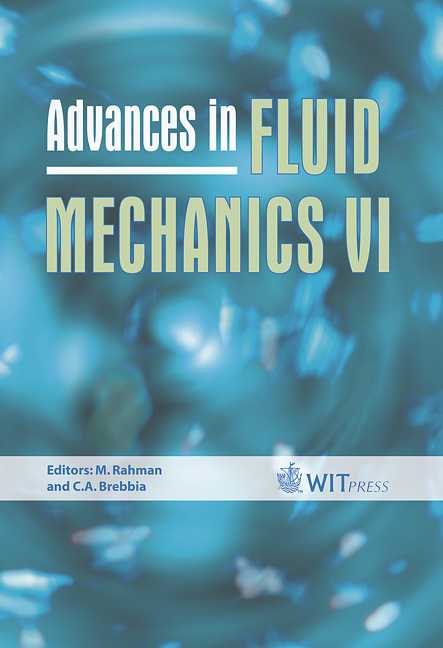The Flow Of Power Law Fluids Between Parallel Plates With Shear Heating
Price
Free (open access)
Transaction
Volume
52
Pages
11
Published
2006
Size
505 kb
Paper DOI
10.2495/AFM060421
Copyright
WIT Press
Author(s)
M. S. Tshehla, T. G. Myers & J. P. F. Charpin
Abstract
A mathematical model for the flow and heat transfer between two parallel plates is studied, using the power law model. The flow due to a pressure gradient and flow due to a moving upper plate are investigated. In the derivation the Navier-Stokes and energy equations is reduced in line with the lubrication theory to provide scalar differential equations. The velocity and temperature profiles are determined analytically and the results show that the power law index n = 1compares favourably with Newtonian profiles. The temperature field is increasing when n increases. The Brinkman number Br, also shows a significance increase of the temperature field when Br increases. Keywords: lubrication theory, non-Newtonian flow, power law viscosity, shear heating. 1 Introduction In a typical operating situation lubricants can be subjected to extreme conditions, such as high temperature, high pressure and shear rate. External heating and high shear rates can lead to high temperature being generated within a fluid. Viscosity is the most sensitive fluid property that represents a material’s internal resistance to deform, see [8, 9]. In this paper the main focus will be on the effect of viscosity variation due to the power law model see, [3, 5, 6] for example. However for possible prediction of the results, the viscosity is considered to be constant in section 2.1 and is allowed to vary in section 2.2. Similar laws are discussed, see Andersson and Valnes [1] and Zheng and Zhang [10] in their study of boundary layer flow along lubricated surface and for squeeze flow in Lian et al [4]. Conclusion is included in section 3. Fluids in which, viscosity is the only property to
Keywords
lubrication theory, non-Newtonian flow, power law viscosity, shear heating.





